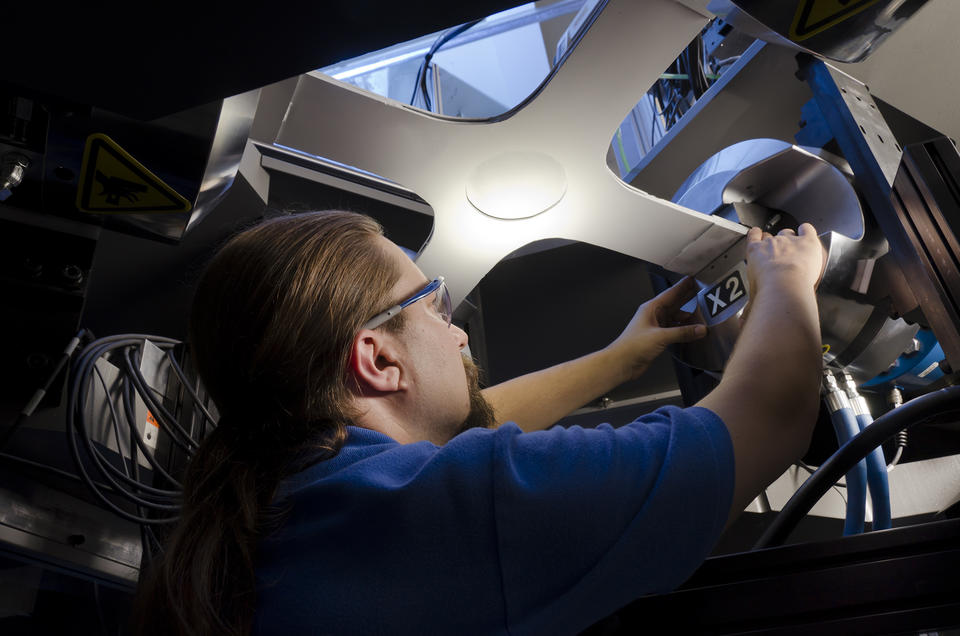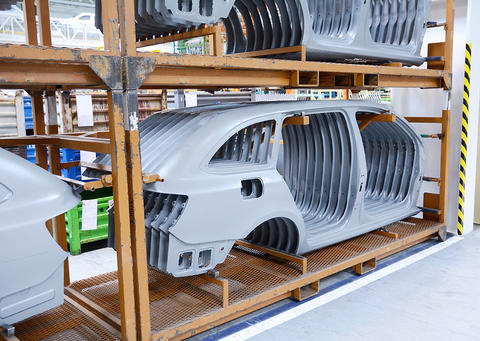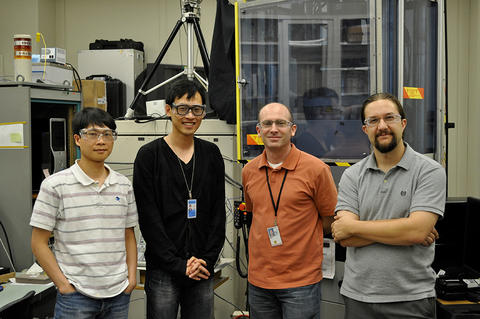Taking Measure
Just a Standard Blog

Today in Taking Measure we asked Presidential Early Career Awards for Scientists and Engineers (PECASE) recipient Adam Creuziger a few questions about his life and work. Adam was recognized for his impact on U.S. automobile manufacturing because of his expertise in the measurement and analysis of materials being evaluated for lightweighting vehicles.
What brought you to NIST?
As I was nearing the end of my graduate work, I still wasn’t sure which career path I wanted to pursue: academic, industrial, or national lab. Another student in my advisors’ research group recommended looking into the National Research Council (NRC) Research Associate program. He had applied for a fellowship a few years before I graduated and invited me out to Gaithersburg, Md., to present some of my graduate work. One of the people I met during my trip was Tim Foecke, who shared some of the research he was doing at the NIST Center for Automotive Lightweighting. I was interested in the blend of mechanical testing and materials science and excited that I could apply my background in shape memory alloys, metals that return to (or remember) their original shape when heated, to other material systems.
Why is the research you do important?
I work to develop measurements and tests that will allow new materials to be used in cars and other vehicles more quickly. There is great interest in the automotive community to improve fuel efficiency and improve safety in a crash, and new materials mean there are a lot of different options for which material to use to build each part of a car.
One of the key ways to improve fuel efficiency is to reduce the weight of the car, either by using thinner high-strength steel, or by using other lightweight alloys such as aluminum, magnesium or carbon fiber composites. Each one of these materials has trade-offs that affect which is "best" to use.

Currently car frames are made of hundreds of individual stamped sheet metal parts. Each one of those parts need to fit together within 1 millimeter to 2 mm so they can be spot welded together.
For a new car design using a well-known material, you may need to remake the dies that shape the sheet metal about 6 to 12 times. Either the shape isn’t quite right and the parts don’t fit together, or the parts split or crack. Worse yet, you may put all the pieces together and find out that not enough energy is absorbed in a crash or some pieces failed in an unexpected location.
For a new material, the dies might need to be reworked more than a hundred times (the 2010 Camaro required 113 refinements for the rear quarter panels, cover story of Automotive Engineering International Oct 2009). That’s a significant cost (each die set is about $1,000,000) and can delay production by weeks if not months.
Most of my work has been focused on steel. The range of different strength and ductility combinations you can make in steel just by adding some other elements to the iron and carbon, heating and cooling it to different temperatures and/or shaping it as you go is amazing to me.
We’ve used steel for almost 4,000 years, and we’re still making new discoveries!
Part of the reason for the wide range of properties is that the atoms in steel can be arranged in quite a variety of different ways. These different atom arrangements, or crystal structures, define how strong or ductile the material is. So knowing how much of each of the different crystal structures you have is very important. That’s a much harder measurement than most people think it is, and I’m trying to find a better method.
What do you like most about working at NIST?

It’s the colleagues I’m surrounded by at NIST that I find most rewarding. One of the things I like most about NIST is that world experts in nearly any measurement topic are available here. Everyone I’ve met is very generous with their time and interested in getting to the bottom of any measurement issue.
Through the SURF, SHIP, NRC Research Fellowship and similar programs I also get a chance to mentor other people as they pursue a career in science and engineering. I’ve had a number of good teachers and mentors over the years; my parents, who have always been some of the best of both; shops and vocational education teachers who helped teach me not to be dangerous with a screwdriver; the good physics, mathematics and problem-solving background I was provided throughout my education; and the many research advisors and colleagues who have taken me under their wing. It’s nice to be able to pay it forward to the next generation.
About the author
Related Posts
Comments
- Reply
Great article. I find your articles very informative and a good read. Thanks for sharing.
The future of the auto industry is expected to be characterized by rapid advancements in autonomous driving, electric vehicles, and connected technologies. The transition to electric cars is already underway, with many automakers investing heavily in battery technology and charging infrastructure. Furthermore, the integration of artificial intelligence and the Internet of Things is set to revolutionize the driving experience, making it safer and more efficient. As consumers become more conscious of their carbon footprint, the demand for sustainable transportation options is expected to grow, creating new opportunities and challenges for the auto industry.





